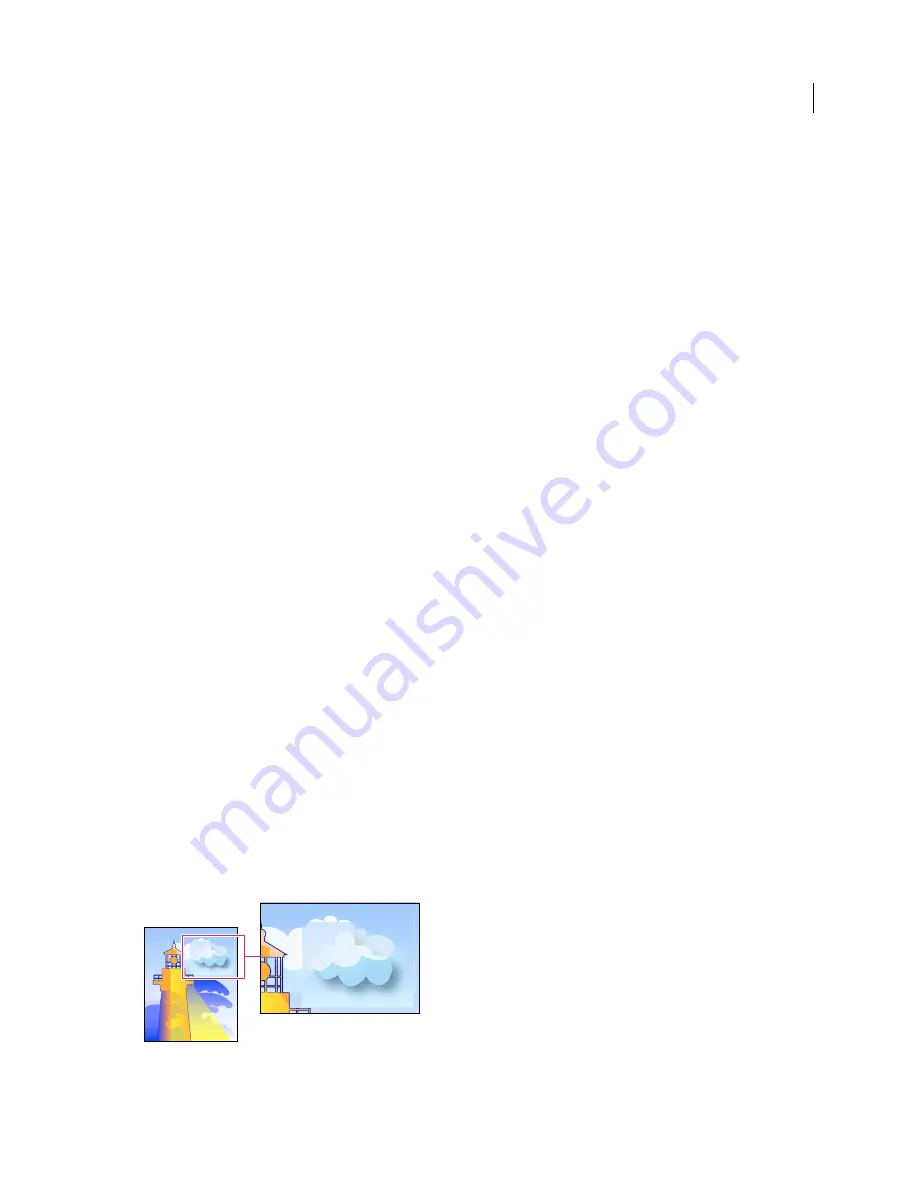
443
USING ACROBAT X PRO
Print production tools
Last updated 10/11/2011
All Rasterized Regions (Illustrator and InDesign)
Highlights objects and intersections of objects that will be rasterized
because there is no other way of representing them in PostScript or because they are more complex than the threshold
specified by the Rasters/Vectors slider. For example, the intersection of two transparent gradients will always be
rasterized, even if the Rasters/Vectors value is 100. The All Rasterized Regions option also shows raster graphics (such
as Photoshop files) involved in transparency, and raster effects such as drop shadows and feathers. Note that this
option takes longer to process than the others.
Transparency Flattener Preset options
Name/Preset
Specifies the name of the preset. Depending on the dialog box, you can type a name in the Name text box
or accept the default. You can enter the name of an existing preset to edit that preset. However, you can’t edit the
default presets.
Raster/Vector balance
Specifies the amount of vector information that will be preserved. Higher settings preserve
more vector objects, while lower settings rasterize more vector objects; intermediate settings preserve simple areas in
vector form and rasterize complex ones. Select the lowest setting to rasterize all the artwork.
Note:
The amount of rasterization that occurs depends on the complexity of the page and the types of overlapping objects.
Line Art And Text Resolution
Rasterizes all objects, including images, vector artwork, text, and gradients, to the
specified resolution. Acrobat and InDesign allow a maximum of 9600 pixels per inch (ppi) for line art, and 1200
ppi
for gradient mesh. Illustrator allows a maximum of 9600 ppi for both line art and gradient mesh. The resolution affects
the precision of intersections when flattened. Line Art and Text Resolution should generally be set to 600-1200 to
provide high-quality rasterization, especially on serif or small point sized type.
Gradient And Mesh Resolution
Specifies the resolution for gradients and Illustrator mesh objects rasterized as a result
of flattening, from 72 to 2400
ppi. The resolution affects the precision of intersections when flattened. Gradient and
mesh resolution should generally be set between 150 and 300 ppi, because the quality of the gradients, drop shadows,
and feathers do not improve with higher resolutions, but printing time and file size increase.
Convert All Text To Outlines
Converts all type objects (point type, area type, and path type) to outlines and discards all
type glyph information on pages containing transparency. This option ensures that the width of text stays consistent
during flattening. Note that enabling this option will cause small fonts to appear slightly thicker when viewed in
Acrobat or printed on low-resolution desktop printers. It doesn’t affect the quality of the type printed on high-
resolution printers or imagesetters.
Convert All Strokes To Outlines
Converts all strokes to simple filled paths on pages containing transparency. This
option ensures that the width of strokes stays consistent during flattening. Note that enabling this option causes thin
strokes to appear slightly thicker and may degrade flattening performance.
Clip Complex Regions
Ensures that the boundaries between vector artwork and rasterized artwork fall along object
paths. This option reduces stitching artifacts that result when part of an object is rasterized while another part of the
object remains in vector form. However, selecting this option may result in paths that are too complex for the printer
to handle.
Stitching, where rasters and vectors meet.
Содержание 22020737 - Acrobat Pro - PC
Страница 1: ...Using ADOBE ACROBAT X PRO...
















































